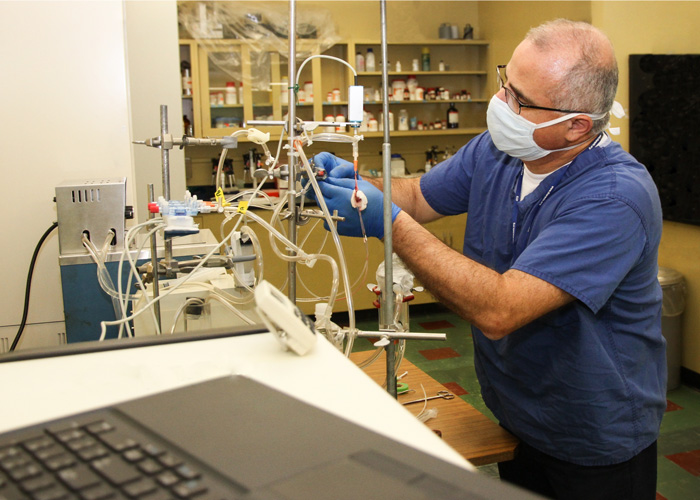Gerringer Dissertation Abstract
Animal to Human Scaling of Cervical Spine Injury Tolerance in Frontal Impact
Dissertation Date: March 15, 2024
Cervical spine (c-spine) injury tolerance is not well understood during severe frontal impacts. While c-spine injuries sustained during these impacts are rare, they are often disproportionally debilitating to the individual in the long-term. In order to study the dynamics of c-spine injury during frontal impact, this dissertation repurposed historical kinematic data from frontal impact experiments using a modern statistical and modeling approach. Kinematic data was obtained from two main historic sources: non-human primate (NHP) frontal impact experiments performed by the Naval Biodynamics Laboratory and human research volunteer (HRV) frontal impact experiments performed by the Air Force Research Laboratory.
First, injury probability curves were calculated from published NHP head kinematics and injury outcomes. These risk curves established injury as a risk of head specific metrics (50% injury risk of head Z acceleration = 101 -G). Next, experimental HRV frontal impact accelerations were used to drive the previously developed GHBMC human head-neck (HN) model to simulate non-injurious frontal impact. Output head accelerations were validated with experimental results. Ligament strains of the c-spine then verified an optimal muscle activation scheme to accurately replicate the live HRVs, with extensors activated at 40% of maximum activation and earlier activation time. A NHP HN model was constructed and simulated under experimental sled accelerations to kinematically validate at non-injurious and injurious levels. GHBMC HN model results were compared to NHP HN model results under the same initial conditions for the NHP experiments to compare scaling factors and to determine head acceleration injury risk in humans during frontal impact.
The NHP HN model confirmed injury mechanisms seen in experimental outcomes from severe frontal impact. Additionally, the resulting scaled injury risk curves, detailing potential severe human injury risk as a function of head acceleration, compared well with the ligament strains in the re-validated GHBMC HN model. An initial injury threshold of 58 -G in the Z-direction, causing neck tension, was established for frontal impact. Overall, the goal of this project was to utilize historical kinematic data from frontal impact experiments, which will likely never be replicated, to predict human c-spine injury tolerance during severe frontal impacts.
Return to Dissertation Schedule


